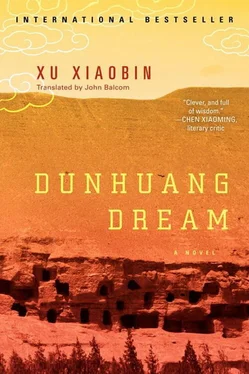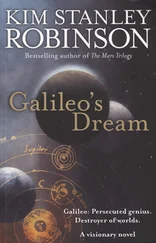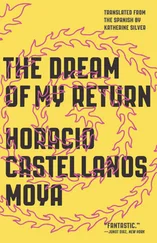1
Tradition has it that once when the Buddha was speaking the Dharma on Mount Grdrakuta, he picked a flower and showed it to the multitudes assembled. None of his followers knew what he meant and looked at one another in confusion. Only Mahakasyapa understood and smiled. The Buddha saw that Mahakasyapa had understood and, extremely happy, announced, “I possess the true dharma-eye and a liberated mind. The reality that is devoid of phenomenal characteristics and the sublime wisdom of the Buddha exist beyond words, this I now hand over to Mahakasyapa.”
The text above tells how the Buddha chose Mahakasyapa to be his successor. Of all the Buddha’s disciples only he was able to understand the Buddha’s wordless transmission of the highest Buddha Dharma. This highest of dharmas is contained in the profound aim of the Zen school: mind-to-mind transmission, my mind is the Buddha.
The Zen School is the most Chinese of all schools of Buddhism. It altered Indian Buddhism through the use of Chinese social ethics and thought, making Buddhism, which was a religion that renounced the world, into a worldly path that emphasized everyday ethical relations.
Bodhidharma’s successor was Hui Ke, the Second Patriarch of Chinese Zen Buddhism. Tradition has it that Hui Ke went to Shaolin Temple and every day went to seek the Dharma from Bodhidharma, who remained facing the wall without uttering a word. Finally one day when there was a heavy snowfall, Bodhidharma spoke, “Those seeking the Dharma do not see the body as the body. The day red snow falls from the sky, I will transmit the Dharma to you.” Hui Ke pondered this for a long time before he suddenly cut off his arm, dyeing the snow red, which he then presented to Bodhidharma, who then transmitted the Dharma to him.
Three years after Bodhidharma died, Song Yun of the Western Wei dynasty (535–557) was returning from a mission to the West when he met Bodhidharma in Pamir. He was walking alone and carrying a single straw sandal. Song Yun asked, “Master, where are you off to?” Bodhidharma replied, “To the Western Paradise.” Song Yun mentioned this upon returning to China. Bodhidharma’s disciples went to the graveyard and found Bodhidharma’s coffin empty save for a single straw sandal.
Naturally this is apocryphal. But Zen philosophy does have its quintessence. During the Tang dynasty, the Zen monk of the Linji Sect of Zen Buddhism, Qingyuan Weixin, said, “Thirty years ago, before this old monk practiced Chan, when I saw a mountain, it was a mountain; when I saw water, it was water. But later, after I had learned a little, when I saw a mountain, it was no longer a mountain, and when I saw water, it was no longer water. Today, I have a place to rest: when I see a mountain is once again a mountain, and when I see water it is once again water” (chapter 17 of the Wudeng huiyuan ). The first part, “saw a mountain, it was a mountain,” represents perception before beginning to practice Zen, the positive of objective world. The second part, which represents perception after starting to practice Zen, is the negation of the first part, or starting from here one enters a state of egolessness from the individual ego, where both I and the other cease to exist, a state wherein all is one. The third part represents the realization after enlightenment, the moment when the infinite is grasped from the finite. It is the negation of negation, a form of affirmation. It is only at this point that one finds the true self. Chinese Zen philosophy, in this respect, is similar to Hegel’s notion of “the negation of the negation.”
With careful consideration, one can see that the development of human society moves in a strange circle from affirmation to negation to the negation of the negation. Bach, in his Musical Offering , used the “endlessly ascending canon” repeating the same theme, a canon that is played with repeated variation to arrive back at the original tonality, but one octave higher. It is filled with the play of musical notes and writing. It is a canon in all styles. There is a fugue of unusual complexity; there is beauty and profound feeling; it is also infused with great joy. It is the fugue of fugues, an arrangement that is self-contained and replete with the metaphor of wisdom. Human society is much like a fugue — there is tremendous variation, but it always returns to its starting point, forming strange circles, the wisdom of which charms. But the starting point returned to is never the real starting point.
2
Wuye received a lesson in honesty when he was quite young. His aunt demanded complete honesty from him. She was so afraid of him lying that she assumed he was lying even when he was telling the truth. It was only after interrogating him that she could determine if he wasn’t lying. But sometimes even the interrogations were not reliable.
He wondered if she hadn’t been lied to and deceived many times in life.
But now he was lying. After meeting Xingxing, he had narrated many nonexistent tales in his letters to his parents so that he might be able to prolong his trip to Dunhuang.
Now, as he sat by bed nine in room three of the Dunhuang City Hospital, as he tightly held the hand of the woman he loved, he felt this world incredibly true.
Strictly speaking, Xingxing was awakened by the desire to vomit. Her unconsciousness had been enveloped by that blood red until it became a frightening allegorical nightmare in which she found herself in a strange land filled with many huge bronze statues. The fierce-looking statues were all together in one place, where, under a bright sun, they cast a huge, mysterious shadow. In the shadow, a youthful form wavered. That youth was pure and good, heroic and strong. He looked like Xiaojun and also like Wuye. He was the perfect incarnation of a man that had come down through the ages.
Later she found that youth actually sitting by her side, tears on his long lashes. Astonished, she looked at his long lashes as if it were the first time she had noticed how long they were. Why were they so long, like those of a European or an American? Such beautiful lashes. Why hadn’t her mother formed her more beautifully? Natural beauty was important, especially for a woman.
Her reluctance to love stemmed from her own sense of inferiority. It started when she was very young. She felt that the adults didn’t like her.
For the longest time, her stubborn and supercilious spirit would not submit. In all things she demonstrated her intelligence, talent, sincerity, and charm. Her efforts were not wasted: in attaining success, she also obtained the attention of many men. But in the eyes of her parents and many friends and relatives, her older sister remained the older sister of childhood and she remained the younger sister. Her paintings were widely praised, but they were not prized by her parents.
She loved her sister. From a very young age, her older sister was her idol. She often unconsciously imitated her. But of course it was basically impossible for her to imitate her sister, because she and her sister were totally unalike. Her sister was traditionally minded and was meticulous in everything, large or small. She was serious and hardworking, and hated everything bad. She didn’t joke around or talk idly. Her sister criticized her for everything, no matter how insignificant and, although she wouldn’t necessarily obey her sister, she felt her sister criticized her out of love. Until one day three years after her sister had married. .
At that time, she had painted some decent pictures and was a modestly well-known young painter. She had not been able to find a husband. Then one day her brother-in-law introduced her to a young man. After meeting him, she returned to discover that there was something not quite right with her sister. That evening her sister snapped at her for something insignificant; “Don’t think you’re such a hot painter! Don’t think you’re so great because you’ve painted a few lousy paintings!” Her sister cried until she was hysterical: “I wouldn’t trade places with you for anything!”
Читать дальше







![Theresa Cheung - The Dream Dictionary from A to Z [Revised edition] - The Ultimate A–Z to Interpret the Secrets of Your Dreams](/books/692092/theresa-cheung-the-dream-dictionary-from-a-to-z-r-thumb.webp)




